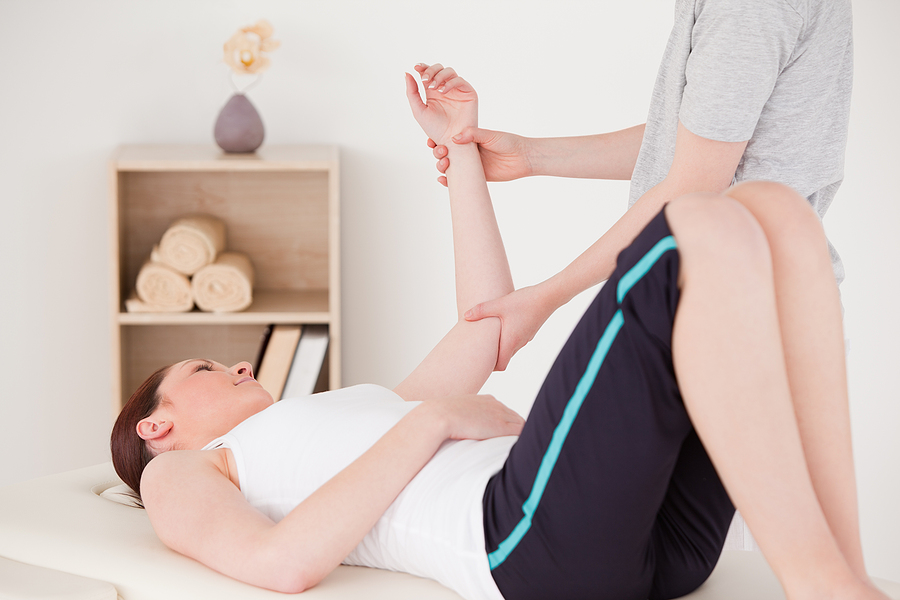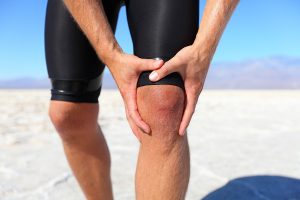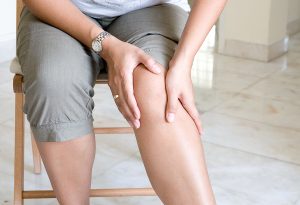Tennis elbow or lateral epicondylitis occurs when the muscles and tendons in the outer elbow become strained from overuse. The condition isn’t specific to people who play tennis, despite its name.
It’s also not to be confused with golfer’s elbow (medial epicondylitis). Golfer’s elbow is also an elbow injury, but it’s on the inner elbow rather than the outer elbow.
Our guide helps you better understand what causes tennis elbow. As specialists in sports and orthopedics, we see many patients with this condition who’ve never picked up a tennis racket. Learn what happens, why it happens, and how to prevent future injury.
What Causes Tennis Elbow
Your elbow is a complex joint connecting your upper arm and lower arm. The bone in the upper arm is the humerus. The lower bones are the radius and ulna. With your elbow on a table, the ulna is the bone that is closest to the table. The radius sits above it.
Extensor muscles connect those bones. However, you have the lateral epicondyle at the beginning of the extensor muscle tendon that connects the ulna and humerus.
Have you ever hit your funny bone? That’s one of the easier ways to keep track of where the lateral epicondyle is. When you overuse your forearm and wrist, the lateral epicondyle and tendon stretch too much and develop small tears.
This damage causes inflammation. The strain of that area is known as lateral epicondylitis or tennis elbow. Symptoms include:
- Pain on the outside of your elbow
- Pain that increases when you flex, rotate, or twist your wrist or forearm
- Pain that radiates down your forearm to your wrist
- Weakened grip strength
If you think about the actions you do every day involving your wrist, forearm, and elbow, you start to understand how much this tendon is used. Anything that involves gripping an item can cause tennis elbow, including:
- Bread making (kneading dough)
- Carpentry
- Computer games or excessive use of a mouse or joystick
- Guitar or bass playing
- Knitting
- Landscaping
- Painting
- Plumbing and HVAC work
- Rock climbing
- Swimming
Tennis elbow is more common in adults between the ages of 30 and 50, though it can happen at any age. The key factor is that you’re doing something repetitive that involves a gripping motion and forearm strength.
How Is Tennis Elbow Treated?
If you’re experiencing elbow or forearm pain, it’s important to stop activities. See an orthopedist to have your injury properly diagnosed. Tennis elbow can heal on its own, but reinjury is possible if you do not change your actions. You need to ensure you’re not overdoing it.
Typically, your doctor will order an X-ray or other form of imaging to ensure there’s no other cause for the pain. If tests show you have tennis elbow, you’ll need to rest your arm. Take an over-the-counter medication like ibuprofen to help with pain.
Depending on the severity, you may need to wear a brace to restrict motion until the tendon is fully healed. Ice helps with swelling and pain, too.
Once your elbow heals, don’t overwork it again. Wrist curls and other wrist and lower forearm exercises help prevent a recurrence. Ask your doctor about working with a physical therapist to guarantee that you don’t reinjure yourself.
If non-surgical treatments don’t work, surgery may be recommended as a last resort. In a surgery, a small incision is made and the damaged tissue is repaired or removed. Ideally, you want to avoid surgery as it can take months to recover and get back to full use of your wrist and forearm.
Another risk of tennis elbow surgery is that nerve damage or infection is possible. The chances of experiencing this complication are low, but even a small percentage can seem like too much of a risk to take if you have a job relying on your forearm and wrist strength.
There are new FDA-approved non-surgical treatments for elbow injuries that are gaining traction as the best way to treat tennis elbow. The goal is to catch the injury early. Talk to a sports and orthopedic specialist about:
- Biologic-Based Treatments: These FDA-approved treatments require a small amount of your blood to be drawn. It’s processed to separate the platelet-rich plasma that’s injected into your elbow. Biologic-based treatments are found to be 4x more effective at helping with pain and healing than steroids.
- Tissue Repair Therapy: FDA-approved treatment that helps tissue in injured tendons heal faster. In this treatment, a small amount of your blood is drawn, processed to separate healing cells, and injected into your elbow tissue. Usually, no more than three injections are needed.
It also doesn’t hurt to improve your diet if necessary. Your muscles and tissue heal best when they’re well-fueled with protein, fiber, calcium, and antioxidants from fruits and vegetables. Avoid a diet high in processed foods, saturated fat, and excess sugar.
If you’re overweight or feel you could lose a few pounds, a medically supervised weight loss program helps ensure you’re eating the right foods to boost recovery and healing.
Tips for Preventing Tennis Elbow Injuries
Whether you want to avoid tennis elbow completely or need to prevent reinjury, Premium Sports and Orthopedics has some tips to help you avoid tennis elbow injuries.
- Avoid overuse by taking breaks every hour.
- Do any exercises recommended by your doctor.
- Don’t use excessive force or twisting motions when doing things involving your wrists.
- Engage in wrist and forearm strengthening exercises, but do so gradually.
- Learn the proper techniques and form for whatever activity you’re doing.
- Warm up before a game or practice.
Whether you play tennis or golf, perform actions at work that involve the wrists and forearms, or compete in video game tournaments, it’s worth scheduling an appointment with Premium Sports and Orthopedics to ensure you are using the proper form and to improve wrist and forearm strength.
If you’re experiencing elbow or forearm pain, stop your activity and follow the RICE guidelines – Rest, Ice, Compression, Elevation. See a doctor as soon as you can. You don’t want to wait and discover your injury was more serious than you thought. With online scheduling, you’ll have an appointment sooner than you might expect.







